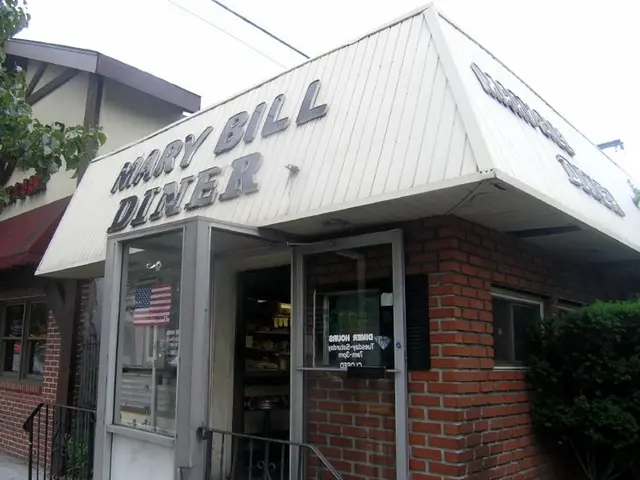Fashion preferences shift, sparking a contest between artificial and natural fabrics
In the heart of Saudi Arabia, a shift is underway in the textile industry. As consumer behaviours change and the nation aligns with Vision 2030 to promote eco-friendly practices and diversify the economy, the debate between synthetic and organic fabrics is intensifying.
Hassan Al-Ghaith, owner of Bin Ghaith Textiles in Riyadh, is one of those leading the charge. Al-Ghaith, who has a passion for organic fibers and old textiles, is particularly interested in the history of textiles, particularly before the advent of synthetic materials. He collects and produces old clothes using organic materials, not for museums but for use.
Al-Ghaith emphasizes the environmental impact of textile waste, stating it is the most wasted thing for the environment.
On the other hand, Amwaj Al-Sultan, owner of Waves Area 1, focuses on home robes and feminine dresses, all polyester-free. However, synthetic materials, such as polyester, nylon, and acrylic, were discovered after the advent of petroleum refining and have become widely used due to their affordability. Synthetic fabrics like polyester cost between $1 to $3 per yard, compared to organic cotton's $6 to $12.
However, synthetic fabrics have a significantly higher environmental impact compared to organic fabrics. Organic fabrics, such as organic cotton, generally have lower energy consumption, reduced chemical use, and less greenhouse gas emissions.
Key differences include:
- Energy and Carbon Footprint: Organic cotton uses about 62% less energy to grow and produce compared to conventional cotton, and has a 40% lower global warming potential. Polyester, a common synthetic fabric, consumes substantial energy — around 125 MJ per kilogram — largely from fossil fuels, and producing one ton of polyester releases approximately 9.52 tons of CO2, far exceeding cotton’s carbon footprint.
- Chemical Use and Pollution: Organic fabrics avoid harmful pesticides, synthetic fertilizers, and chemicals used in conventional cotton farming, which release potent greenhouse gases like nitrous oxide and leave toxic residues that persist in products. Polyester production involves toxic chemicals (e.g., antimony catalysts) that may contaminate wastewater if not properly treated. Additionally, synthetic fabrics contribute to PFAS chemical pollution, linked to serious health risks.
- Microplastic Pollution: Synthetic fibers, especially polyester, shed microplastics during washing; these microfibers accumulate in marine ecosystems and pose long-term pollution risks. An estimated half a million tons of polyester microfibers enter oceans annually from washing plastic-based textiles. Organic fabrics, while biodegradable, also have environmental risks as treated natural fibers can release chemicals during degradation, affecting aquatic life, but their overall persistence is lower.
- Water Usage: Although polyester uses less water in manufacturing than natural fibers, organic cotton uses less water and pesticides than conventional cotton, improving soil health and reducing environmental strain.
- Health and Safety: Organic fabrics are considered safer and more skin-friendly due to the absence of harmful chemicals and pesticides, beneficial both for consumers and textile workers.
Transitioning to organic fabrics could lower environmental harms linked to water scarcity and pollution challenges in the region. However, synthetic fabrics remain widely used for their durability and cost, despite their higher environmental costs. Sustainable alternatives such as recycled polyester and plant-based fibers (hemp, linen) provide additional pathways toward reducing environmental impact in Saudi Arabia.
In conclusion, organic fabrics offer a substantially lower environmental footprint and better health profile than synthetic fabrics. Both natural and synthetic materials require improved management to minimize their respective ecological impacts. As the Saudi textile industry continues to evolve, it's essential to consider these environmental concerns and promote sustainable practices for a greener future.
[1] Global Organic Textile Standard (GOTS) (n.d.). Environmental benefits of organic cotton. Retrieved from https://www.global-standard.org/en/benefits/environmental/
[2] Textile Exchange (2017). The state of the industry report 2017. Retrieved from https://textileexchange.org/wp-content/uploads/2017/05/TE-State-of-the-Industry-Report-2017.pdf
[3] Ellen MacArthur Foundation (2017). A new textiles economy: Redesigning fashion's future. Retrieved from https://www.ellenmacarthurfoundation.org/assets/downloads/publications/A-New-Textiles-Economy-Redesigning-Fashion-s-Future-2017-06-27.pdf
[4] Textile Exchange (2020). The state of the industry report 2020. Retrieved from https://textileexchange.org/wp-content/uploads/2020/05/TE-State-of-the-Industry-Report-2020.pdf
[5] Environmental Protection Agency (n.d.). PFAS. Retrieved from https://www.epa.gov/pfas
- In Saudi Arabia, the textile industry is undergoing a transformation, with leaders like Hassan Al-Ghaith championing organic fabrics.
- Al-Ghaith, a textile history enthusiast, produces vintage clothing using organic materials, underscoring the environmental impact of textile waste.
- On the contrary, Amwaj Al-Sultan's Waves Area 1 prioritizes polyester-free home robes and dresses, citing affordability as a key factor for synthetic materials.
- However, synthetic fabrics like polyester have a larger environmental impact, consuming more energy, releasing more greenhouse gases, and causing microplastic pollution.
- The shift to organic fabrics in Saudi Arabia could aid in addressing water scarcity and pollution issues, but the durability and affordability of synthetics still make them popular.
- Sustainable alternatives such as recycled polyester and plant-based fibers like hemp and linen offer viable pathways to reduce environmental impact.
- Organic fabrics offer lower environmental footprints and safer profiles compared to synthetic fabrics, but both materials need improved management to minimize ecological impacts.
- As the Saudi textile industry grows, it's crucial to prioritize sustainable practices to ensure a greener future, supporting the nation's goal of eco-friendly practices and economic diversification outlined in Vision 2030. [References: 1,2,3,4,5]




